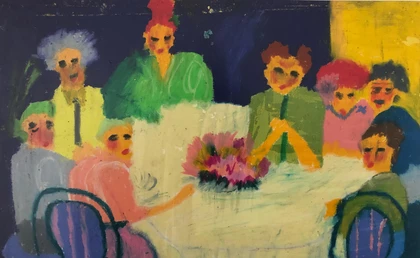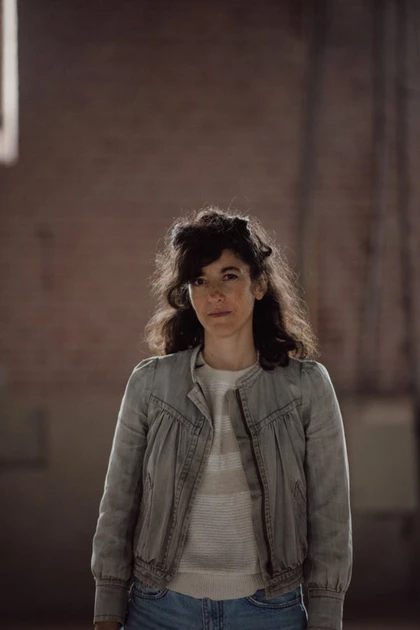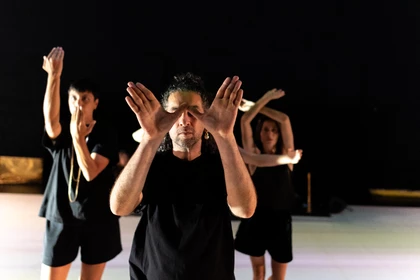"I like to think that Kassia came to me. She appeared during a discussion with the Royal Philharmonic Orchestra of Liège, which had asked me to work on a symphonic piece. I wanted to bring in a female composer, and while doing some research on the internet, I came across Kassia, who was presented as one of the first European composers, before Hildegard von Bingen."

This new piece is based on the figure of Kassia, or Cassienne, of Constantinople, who was a nun, poet, musician and composer in the 9th century. How did you discover this artist?
I like to think that Kassia came to me. She appeared during a discussion with the Royal Philharmonic Orchestra of Liège, which had asked me to work on a symphonic piece. I wanted to bring in a female composer, and while doing some research on the internet, I came across Kassia, who was presented as one of the first European composers, before Hildegard von Bingen. I found her music extraordinary: liturgical hymns to saints and martyrs, sung with very few instruments. Although this music wasn't suitable for the philharmonic project, Kassia stayed with me. Since then, she has haunted the studio, and today we invoke her on stage.
What appealed to you about this figure?
I found this woman's destiny incredible. Kassia chose to enter monastic life so that she could devote herself to creativity, as many women and queer people did to escape patriarchy and the expectations placed upon them. Her commitment to fighting iconoclastic persecution led to her being whipped, after which she opened a convent and became its hygoumène, or abbess. She then devoted her life to composition. Twenty-three of her scores have survived, which is exceptional. Although women sang, they rarely signed their works, as the scribes responsible for transcribing them were men. Her hymns, which I find magnificent, highlight female figures, both real and imaginary — such as Saint Pelagia, an actress and prostitute who dressed as a man and ended her life as a hermit.
You enjoy delving into archives to create. How did your research for Kassia Undead go?
Not being an expert on this period at all, the beginning of my research was a dizzying dive. Unlike my previous piece on the dancer Ida Rubinstein, IDA don't cry me love, where I consulted a few booklets at the National Library of France, Kassia of Constantinople required me to explore a whole swathe of history. I contacted historian Brunella Danna Allegrini, a specialist in 9th-century medieval art, with whom I remained in contact throughout the creation of the play. With her, I delved into the history of Byzantium, a place of friction between East and West, a crossroads at the border between Europe, Asia and Africa. It was a permeable place of exchange, which also corresponded to a period of peace. As soon as the borders became more fixed, we see that the terrain became more conducive to war.
Your creations often feature historical female figures, such as Ida Rubinstein and Bronislava Nijinska. What role do they play in your work?
I don't know if I seek out these women or if they come to me, but I am constantly surprised to find them there. It's crazy! I love these ghost stories that resurface. Are they there to resist or just to reawaken forgotten curiosities? Do they impose themselves to satisfy my need to find my heroines? Kassia Undead echoes ghosts and the living dead: we try to summon Kassia, to bring her back with us. It's also a way of questioning how, as performers, we carry our own ghosts.

For Kassia Undead, you are surrounded by a diverse group of performers who dance and sing. Can you introduce this team?
There are eight performers on stage, many of whom are both singers and dancers. I have already collaborated with some of them, such as Marta Capaccioli, who dances in all my projects since IDA don’t cry me love, Cate Hortl, who is a composer in La Grande Nymphe, and Emma Laroche, in charge of our technical direction and of the lights. There is also Tarek Halaby, a dancer and singer who collaborated with Martin Zimmerman and the Rosas company; Agnès Potié, who has worked with Flora Detraz and Maguy Marin; Aymara Parola, who has danced for Wim Vandekeybus; musician Klara Verkin and opera singer Els Mondelaers, who has worked with Benjamin Abel Meirhaeghe, among others. I also called on Ateliers Indigo, a collective that brings together several artists with intellectual impairment. They created several tapestries inspired by the medieval world, which form the scenography for the show.
What dances and songs do you use to bring Kassia back?
We try to wake her up with macabre dances and steps inspired by the grotesque gestures of the Middle Ages. Using these elements, medieval iconography and Kassia's songs, we have recreated a new iconography and a new set of gestures, invented through improvisation. These then take the form of living tableaux that transform themselves. The world of horror, ghosts and the undead is also present: we worked from old photos that are supposed to capture spectres, but also slow-motion movements, to represent Kassia's return from beyond the grave. Through this piece, we are creating our own folklore, nourished by fiction and storytelling. In this ceremony, I invoke forgotten women by saying their names, so that they may accompany us, heal us and carry us. But will Kassia come? It is still uncertain. I like to play with this anticipation and doubt at each performance.
